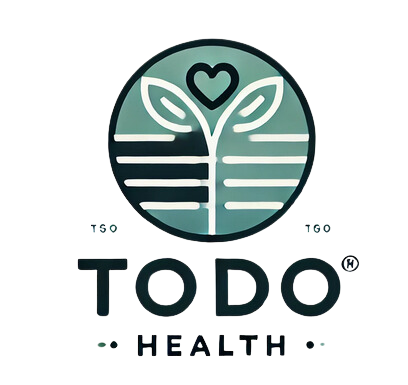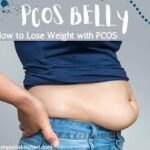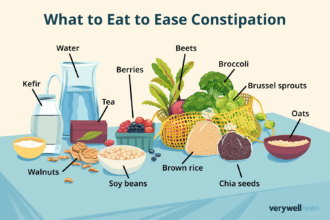Bloating is one of the most common digestive complaints. That uncomfortable swelling, tightness, and gassy feeling in your stomach can hit at any time—even when you think you’re eating all the “right” foods. The surprising truth? Some of the healthiest foods in your kitchen might be the ones sabotaging your gut.
If you’ve been eating clean but still feel bloated, don’t blame your body just yet. Often, it’s about how certain ingredients interact with your unique digestive system. Let’s look at five everyday foods that are secretly behind your belly bloat and what you can swap them with to feel lighter and more comfortable.
1. Cruciferous Vegetables (Broccoli, Cauliflower, Kale)
These veggies are packed with nutrients, antioxidants, and fiber—but they also contain complex sugars like raffinose that are hard to digest. When they reach your colon undigested, they ferment and release gas. That’s why you can feel bloated or gassy even after a salad or steamed veggie bowl.
What to eat instead:
Opt for cooked zucchini, carrots, spinach, or green beans. These are gentler on the digestive system and less likely to cause bloating. Cooking breaks down some of the fiber, making veggies easier to digest.
Tip: If you love broccoli or kale, steam them well or sauté them lightly with digestive spices like ginger or cumin. Start with small portions and build your tolerance.
2. Legumes (Lentils, Chickpeas, Beans)
Beans and lentils are excellent sources of plant-based protein and fiber, but they’re notorious for causing gas and bloating. This is mostly because they contain both fiber and FODMAPs—fermentable carbs that can be difficult to digest, especially if your gut is sensitive or not used to high-fiber foods.
What to eat instead:
Try smaller portions of well-soaked lentils or opt for split yellow moong dal or canned lentils, which are easier to digest. You can also include quinoa, tofu, or tempeh as protein sources that are less likely to bloat you.
Tip: Soak your beans overnight and cook them thoroughly. Adding herbs like bay leaf or hing (asafoetida) to the cooking water can help reduce gas.
3. Dairy Products (Milk, Cheese, Yogurt)
Even if you’re not officially lactose intolerant, dairy can be a hidden trigger for bloating. Many people gradually lose the enzyme lactase, which is needed to break down lactose (the sugar in milk). This results in lactose passing through your gut undigested, fermenting, and causing gas, bloating, and cramping.
What to eat instead:
Choose lactose-free dairy options or plant-based alternatives like almond milk, oat milk, coconut yogurt, or lactose-free cheese. Greek yogurt can be easier to digest than regular yogurt due to lower lactose content and live probiotics.
Tip: Always check labels on dairy-free alternatives—some have added gums or sweeteners that may also contribute to bloating.
4. Artificial Sweeteners and Sugar Alcohols (Sorbitol, Xylitol, Erythritol)
Found in sugar-free gum, protein bars, “diet” drinks, and low-carb snacks, sugar alcohols and artificial sweeteners are often marketed as healthy alternatives. But your gut may disagree. These compounds are not fully absorbed in the small intestine, which means they ferment in your colon and produce gas.
What to eat instead:
Stick to natural sweeteners like small amounts of honey, maple syrup, or monk fruit extract. Even better, train your taste buds to enjoy less sweetness over time.
Tip: Check ingredient labels for words ending in “-ol” (like sorbitol or maltitol), and avoid them if you notice a bloating pattern.
5. Raw Onions and Garlic
Onions and garlic are packed with flavor and known for their heart and immune benefits. But they’re also high in fructans, a type of FODMAP that many people find hard to digest. Fructans are fermentable fibers that can lead to excessive gas production and bloating, especially when eaten raw.
What to eat instead:
If you’re sensitive, try using garlic-infused olive oil for flavor without the fiber. Green tops of spring onions or chives can also add taste without triggering your gut.
Tip: Cooking onions and garlic reduces their fructan content. Roasted garlic or sautéed onions may be more tolerable in small portions.
Bonus: Tips to Prevent Bloating Naturally
Switching out certain ingredients can help, but don’t forget the basics. Even with a perfect diet, bloating can still occur if you ignore how you eat:
-
Chew thoroughly. Digestion starts in the mouth. Proper chewing reduces strain on your gut.
-
Avoid overeating. Eating large portions—even of healthy food—can overwhelm your digestive system.
-
Stay hydrated between meals. Water helps keep digestion smooth, but chugging during meals can dilute digestive enzymes.
-
Move a little. A gentle walk after meals can stimulate digestion and reduce gas buildup.
When to Seek Help
Occasional bloating is normal. But if it becomes chronic, painful, or disrupts your daily life, it’s worth speaking to a healthcare provider. Sometimes bloating is a sign of underlying issues like food intolerances, IBS, or imbalanced gut bacteria.
Eating healthy is a wonderful step toward better well-being, but even clean diets can come with their share of hidden triggers. If your stomach keeps feeling full, gassy, or uncomfortable, it may be time to look closer at what’s on your plate.
Remember, every body is different. The goal isn’t to eliminate healthy foods forever—it’s to understand how your body responds and adjust accordingly. By being mindful and making small changes, you can eat well and feel good doing it.





